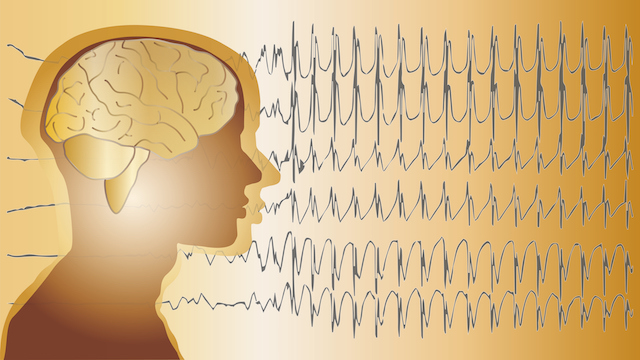Highlights
- •CaMKIIα phosphorylates GluN2A at Ser-1459 in response to glycine stimulation
- •CaMKIIα and SNX27 are required for the glycine-induced increase in surface GluN2A
- •GluN2A Ser-1459 is a critical residue that controls the gating of NMDA receptors
- •The epilepsy-associated GluN2A S1459G variant prolongs open channel duration
Summary
NMDA receptor (NMDAR)-dependent Ca2+ influx underpins multiple forms of synaptic plasticity. Most synaptic NMDAR currents in the adult forebrain are mediated by GluN2A-containing receptors, which are rapidly inserted into synapses during long-term potentiation (LTP); however, the underlying molecular mechanisms remain poorly understood. In this study, we show that GluN2A is phosphorylated at Ser-1459 by Ca2+/calmodulin-dependent kinase IIα (CaMKIIα) in response to glycine stimulation that mimics LTP in primary neurons. Phosphorylation of Ser-1459 promotes GluN2A interaction with the sorting nexin 27 (SNX27)-retromer complex, thereby enhancing the endosomal recycling of NMDARs. Loss of SNX27 or CaMKIIα function blocks the glycine-induced increase in GluN2A-NMDARs on the neuronal membrane. Interestingly, mutations of Ser-1459, including the rare S1459G human epilepsy variant, prolong the decay times of NMDAR-mediated synaptic currents in heterosynapses by increasing the duration of channel opening. These findings not only identify a critical role of Ser-1459 phosphorylation in regulating the function of NMDARs, but they also explain how the S1459G variant dysregulates NMDAR function.
Introduction
NMDA receptors (NMDARs) are ionotropic glutamate receptors that act as “coincidence detectors” of presynaptic glutamate release and postsynaptic membrane depolarization. NMDAR-mediated excitatory postsynaptic currents (EPSCs) mediate the flux of calcium (Ca2+) into the postsynaptic compartment, triggering downstream Ca2+-dependent signaling cascades that are crucial for neuronal development, synaptic and structural plasticity, learning, and memory (Bosch and Hayashi, 2012; Morris, 2013; Nicoll and Roche, 2013; Paoletti et al., 2013). Pharmacological and genetic manipulations that disrupt the expression and function of NMDARs often cause impairments in synaptic plasticity and cognitive deficits in animal models. Importantly, NMDAR dysfunction has also been implicated in many human neurological disorders, including stroke, epilepsy, Alzheimer’s disease, neuropathic pain, and schizophrenia (Zhou and Sheng, 2013). Moreover, genes that encode NMDAR subunits are remarkably intolerant to mutations, which have been associated with various human neurodevelopmental and neuropsychiatric disorders such as epilepsy, autism spectrum disorders, intellectual disability, and schizophrenia (Myers et al., 2019; XiangWei et al., 2018).Most NMDARs in the forebrain are heterotetramers composed of two obligatory GluN1 subunits and two identical (diheteromeric) or different (triheteromeric) GluN2 subunits (Paoletti et al., 2013; Sanz-Clemente et al., 2013; Stroebel et al., 2018; Vieira et al., 2020). Among the four different glutamate-binding GluN2 subunits, GluN2A and GluN2B, each of which confers NMDARs with distinct ion channel properties and intracellular trafficking pathways (Sanz-Clemente et al., 2013; Vieira et al., 2020; Wyllie et al., 2013), are highly expressed in the hippocampus and cortex (Gray et al., 2011). The expression of synaptic NMDARs is regulated during development as they undergo a switch in their subunit composition from GluN2B- to GluN2A-containing receptors (Monyer et al., 1994; Sheng et al., 1994). In the developing visual cortex, the switch in NMDAR subunit composition during the critical period can be rapidly driven by sensory experience (Quinlan et al., 1999). The same phenomenon has also been observed following the induction of long-term potentiation (LTP) in acute hippocampal slices from young mice (Bellone and Nicoll, 2007), organotypic hippocampal slices (Barria and Malinow, 2002; Grosshans et al., 2002), and primary neuronal cultures (Swanger et al., 2013; Zhang et al., 2015). Given that GluN2A-containing NMDARs have a higher channel open probability and a faster deactivation time than do those containing the GluN2B subunit, such an activity-dependent switch in NMDAR subunit composition at synapses will have major implications for dendritic integration, circuit refinement, and synaptic plasticity (Barria and Malinow, 2005; Kirkwood et al., 1996; Shipton and Paulsen, 2013; Yashiro and Philpot, 2008). Despite this, the molecular mechanisms underlying the activity-dependent trafficking of GluN2A-containing NMDARs during synaptic plasticity remain poorly understood.The precise subcellular localization, membrane trafficking, and synaptic targeting of GluN2-containing NMDARs are largely determined by protein-protein interactions and post-translational modifications in the cytoplasmic C-terminal tails (Lussier et al., 2015; Vieira et al., 2020). Sorting nexin 27 (SNX27) is a highly conserved regulator of cargo retrieval from endosomes to the plasma membrane that directly interacts with various GluN2 subunits of NMDARs through its N-terminal PDZ (postsynaptic density 95/disc-large/zona occluden-1) domain (Cai et al., 2011; Clairfeuille et al., 2016; Mota Vieira et al., 2020). SNX27 forms a complex with retromer (a heterotrimer of VPS26, VPS29, and VSP35) via its direct interaction with VPS26, and it acts as a cargo adaptor for retromer-mediated transport from intracellular endosomes to the cell surface (Cullen and Korswagen, 2011; Gallon et al., 2014). Genetic deletion of SNX27 causes a profound loss of total and surface NMDAR expression due to a defect in the endosomal trafficking pathway, underscoring its critical role in regulating NMDAR recycling in the brain (Wang et al., 2013). The high-affinity binding of the SNX27 PDZ domain to its cargo molecules generally involves the formation of an “electrostatic clamp,” which is formed constitutively by acidic residues at the (−3) and (−5) positions upstream of the PDZ binding motif, or, alternatively, by phosphorylation of serine or threonine residues in these positions (Clairfeuille et al., 2016). The corresponding amino acid at the (−5) position within the GluN2A C-terminal tail is a serine residue (Ser-1459, see Figure 1A), which has recently been shown to be a substrate of Ca2+/calmodulin-dependent kinase IIα (CaMKIIα) (Mota Vieira et al., 2020). Importantly, a rare genetic variant that involves the S1459G substitution has been reported in a patient with epilepsy (Bowling et al., 2017). Although the phosphorylation state of Ser-1459 can regulate the interaction between GluN2A and SNX27, as well as receptor trafficking under basal conditions (Mota Vieira et al., 2020), the role of Ser-1459 phosphorylation in controlling the activity-dependent endosomal recycling of NMDARs during synaptic potentiation is unclear.







